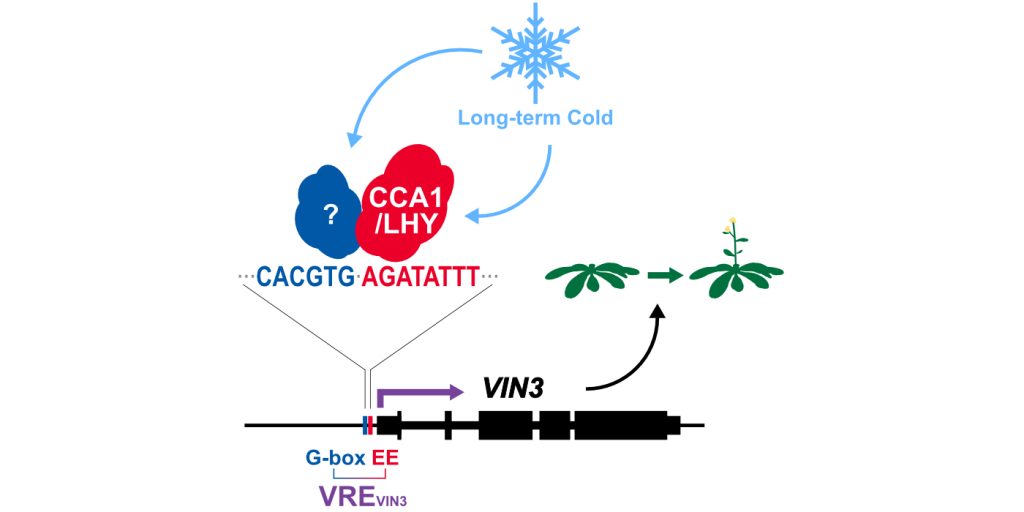Vernalization response by a cis-element in the VIN3 promoter and the circadian clock
By Jinseul Kyung and Myeongjune Jeon; School of Biological Sciences, Seoul National University, Seoul 08826, Korea
Background:
Appropriate timing of reproduction is essential for the survival of all living organisms, especially land plants. To determine the proper timing of flowering, plants integrate diverse environmental cues, of which vernalization, an acceleration of flowering by winter cold, is a classic example. In Arabidopsis thaliana, VERNALIZATION INSENSITIVE 3 (VIN3) expression is induced by winter cold and encodes a key regulator of vernalization. However, how VIN3 is upregulated by winter cold is not well understood. Thus, discovering regulators of VIN3 would illuminate a key mechanism for vernalization in A. thaliana.
Question:
We asked how VIN3 is induced under winter cold. In detail, we asked which cis-element(s) in the VIN3 promoter and their cognate transcription factors are responsible for the induction of VIN3 expression under long-term winter cold. We then tested whether VIN3 induction is blocked by the loss of either the specific cis-element or the transcription factors.
 Findings:
Findings:
We identified a vernalization-responsive cis-element (VREVIN3) in the VIN3 promoter. Mutations in VREVIN3 disturbed full induction of VIN3 by the winter cold and led to defects in flowering induction when used to drive the expression of VIN3 complementation constructs in a vin3 mutant background. In addition, CIRCADIAN CLOCK ASSOCIATED 1 (CCA1) and LATE ELONGATED HYPOCOTYL (LHY), two circadian clock regulators, were found to be associated with the VREVIN3, and act to induce VIN3 expression. When both CCA1 and LHY were mutated, vernalization-mediated VIN3 induction and acceleration of flowering were impaired, especially under mild cold conditions.
Next steps:
Our work suggests that CCA1 and LHY induce VIN3 expression. However, these circadian clock regulators are not sufficient to induce VIN3. Therefore, an unknown VIN3 regulator(s) is additionally required for VIN3 activation. Identifying such additional VIN3 regulators would provide a more complete understanding of vernalization.
Jinseul Kyung, Myeongjune Jeon, Goowon Jeong, Yourae Shin, Eunjoo Seo, Jihyeon Yu, Hoyeun Kim, Chung-Mo Park, Daehee Hwang, and Ilha Lee (2022). The two Clock Proteins CCA1 and LHY Activate VIN3 Transcription during Vernalization through the Vernalization-Responsive cis-Element. Plant Cell, https://doi.org/10.1093/plcell/koab304



